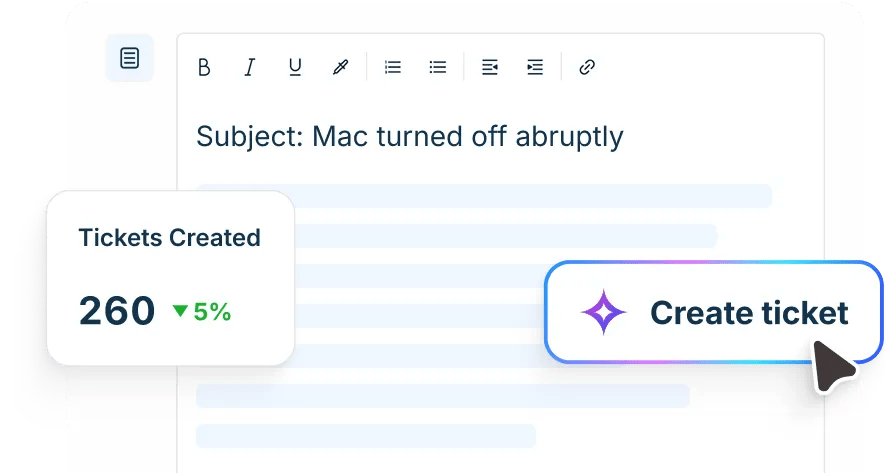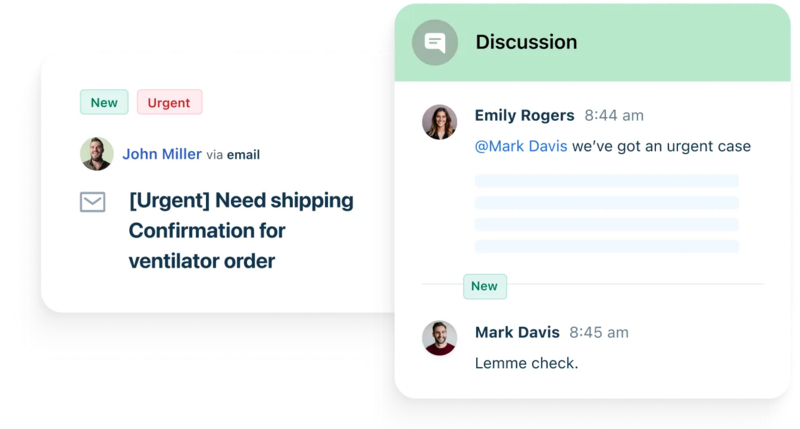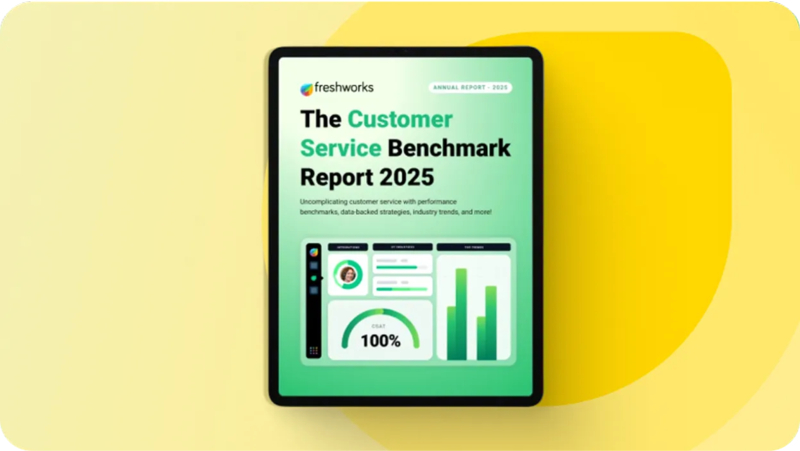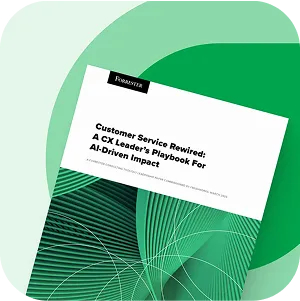Vereinfachen Sie Ihre IT und Ihren Kundenservice
Freshworks bietet unternehmensgerechte, KI-gestützte Service-Software für herausragende Kunden- und Mitarbeitererfahrungen.





















Leistungsstarke Lösungen für höhere Kundenbindung, Effizienz und Wachstumsraten


Konzipiert für Einfachheit, entwickelt für Mehrwert
Implementierung: schneller. ROI: höher. Kosten: absolut transparent. Freshworks bietet Leistung auf Enterprise-Niveau – ohne Enterprise-Komplexität.Interesse an höheren Zufriedenheitswerten? Lösen Sie mehr Kunden- und Mitarbeiterprobleme – schneller und einfacher. Leute lieben es.
Agentenbasierte KI verleiht die Freiheit, Probleme mit einem Klick zu identifizieren und zu lösen.
KI-Agenten reduzieren die Anzahl zu lösender Tickets – Sie verkürzen Ihre Lösungszeit und steigern Ihre Produktivität.
Fortschrittliche Ticketing-Funktionen, Automatisierung und integrierte KI. Ab sofort istt ein besserer und schnellerer Service möglich.
Schließen Sie sich den über 73.000 Unternehmen an, die ihre Servicebereitstellung vereinfachen
Alle Kundenberichte anzeigen„Automatisierung war ein Hauptgrund für unsere Wahl von Freshservice.“
„Freshservice hat uns eine Welt der Automatisierung eröffnet, die wir zuvor nicht kannten. Es hat unsere Helpdesk-Prozesse flüssiger und effizienter gemacht.“
„Mit Freshservice an unserer Seite kann das Transportteam eingehende Anfragen nun innerhalb von 15 Minuten bearbeiten, anstatt wie bisher innerhalb von drei Monaten.“
„Wir durften am Betatest von Freddy AI teilnehmen. Die Möglichkeit war faszinierend, weil wir sehen konnten, was Freddy AI leisten kann. Für das Team war es ein echter Game-Changer.“
„Seit dem Wechsel von 16 isolierten Kundensupport-Tools zu Freshworks erzielen wir erhebliche Kosteneinsparungen.“
Erhalten Sie die Informationen, die Sie benötigen





Starten Sie mit Freshworks
Kostenlos testen. Schnell skalieren.
Überzeugen Sie sich von der optimierten Kunden- und Mitarbeitererfahrung mit einem kostenlosen Test von Freshdesk oder Freshservice. Keine Kreditkarte erforderlich.
Schnelle Wirkung in Aktion sehen
Unsere Produktexpert:innen zeigen Ihnen, wie Freshdesk Ihre individuellen Herausforderungen meistern kann. Melden Sie sich für eine persönliche Vorführung an, die auf Ihre spezifischen Zwecke zugeschnitten ist.
Erleben, entdecken, inspirieren lassen
Entdecken Sie unsere Bibliothek mit Fallstudien, Produktführungen, Webinaren und Einblicken.